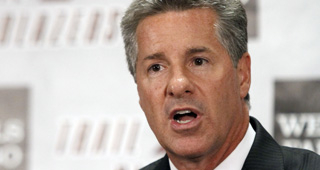As quickly as the Portland Trail Blazers transformed themselves from a 33-win team in 12-13 to a 50-win playoff team in both 13-14 and 14-15, the franchise just as quickly begins another rebuilding process. The Blazers lost four of their five starters, as well as their 6th man in the offseason. The Blazers did offset the complete change of course by signing Damian Lillard to a maximum five-year, $120 million extension as the face of the franchise.
But the Blazers weren’t content to entirely bottom out and just play prospects around Lillard. Portland moved quickly in free agency in agreeing to terms with Al-Farouq Aminu and Ed Davis. At first glance both deals, Aminu’s four-year, $30 million contract and a three-year, $20 million for Davis, seemed odd for a rebuilding franchise.
Both contracts initially seemed like significant overpays as the offseason began.
Second, the Blazers were adding mid-tier vets to a situation where most teams would play young players heavy minutes. Upon further examination, both signings were more shrewd than they initially seemed.
Aminu, a former lottery pick for the Los Angeles Clippers when Neil Olshey was general manager, had flamed out with the New Orleans Pelicans before rebuilding some value last season with the Mavericks. He showed the ability to not only play small forward, his traditional position, but to also be effective as a small ball power forward. In a league where the ability to play up a position is increasingly desired, this was key for Aminu.
Still, Portland signing him to a contract that averaged $7.5 million over the life of the deal when he had made the league minimum the prior year seemed like an odd decision. The fact it was one of the very first deals agreed to in free agency was even odder. This signaled that Portland had made Aminu their prime target in free agency.
Following that up by agreeing to a deal with Davis for an average salary just below $7 million per year after he had also just made the league minimum was even more confusing.
The Blazers had just acquired Noah Vonleh and Mason Plumlee in trades, and had former lottery pick Meyers Leonard as well. When Portland acquired Maurice Harkless shortly thereafter, the questions really began to form.
What really happened is that Portland correctly read the market quicker than most and focused on what would eventually be considered good deals. In the new world where the cap is exploding to levels we’ve never seen, having players on below market deals will allow for that much more flexibility moving forward to add better, more expensive, talent to the roster.
The average salary for Aminu and Davis is likely to be around, or even under, the league average salary once the cap jumps kick in starting this coming summer. Even smarter by the Blazers, they frontloaded both deals. Portland knew they wouldn’t need to spend all their available cap space this summer, so to entice Aminu and Davis to the Pacific Northwest, they offered them more money up front. What this means is that by signing both players to contracts that decline each year, their deals actually become more valuable going forward.
Assuming Aminu and Davis remain healthy and productive, which they should at age 25 and 26 respectively, the Trail Blazers will have incredible value in both contracts. That allows them to use either player as trade chips as they get better talent on the roster or as their own young talent develops. Or they can simply keep each player as underpaid, high performing role players.
The Trail Blazers also made one of the riskiest, yet calculated, moves of the summer in signing Enes Kanter of the Thunder to a maximum offer sheet as a Restricted Free Agent. This forced Oklahoma City to either let Kanter walk to a division rival, or to match and tie up precious cap space. Portland played the odds that OKC would have to match, having no reasonable avenue available to replace Kanter. This move may pay off for the next few years for Portland simply by hamstringing a direct opponent in their division.
The Trail Blazers’ rebuild is ahead of schedule. Expected to potentially be among the worst teams in the league in a tough Western Conference, they have hung around the playoff picture all season. The offense is playing at a slower pace than the previous year, but has been just as effective. This is likely a byproduct of Terry Stotts managing the game more with the youngsters versus the vets of prior years. The defense has fallen off, but that is to be expected with new faces and younger players getting so many minutes.
By betting on internal improvement from C.J. McCollum and Allen Crabbe, around the offseason pickups of Davis, Aminu and Mason Plumlee, paired with the budding stardom of Lillard, Portland is well positioned for the future. Lillard is locked up for the next five years.
If Portland lets Gerald Henderson and Chris Kaman walk in free agency as expected, they should have the necessary cap room to add another piece this summer, while also retaining Crabbe, Mo Harkless and Meyers Leonard if desired. Olshey said recently that optimizing asset value is a key for the Trail Blazers. The moves this summer have backed that philosophy.
For those who don’t favor bottoming out entirely and hoping for luck in the lottery, the Blazers’ rebuild is refreshing. Young players are seeing most of the minutes and producing. Smart veteran signings supplement them. And the team is competitive and winning enough to hang with anyone. The team is on pace to rebound quickly and to get Rip City back to the winning ways they are used to.



